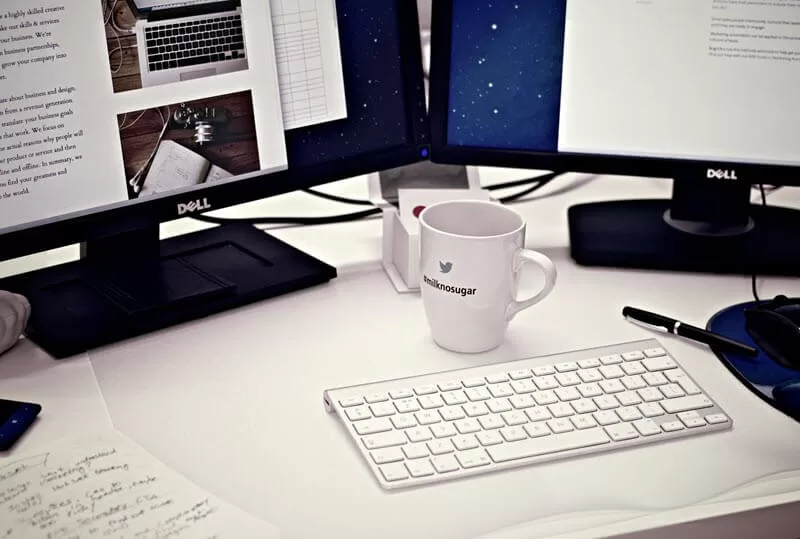
Web layout is a perpetual challenge for DIY’ers and others just starting their online adventure.
It is a no brainer that in today’s world, every business needs to have an online presence. More specifically, whether in business for you or someone else, you need a website.
By the way, notice I wrote, “… whether in business for you or …”
Many professionals, 100% commission salespeople, coaches, consultants, and people in private practice forget that owning their own name as a domain name is just as important as having a website.
Even if you simply register your name as a domain name and point or redirect it to your LinkedIn profile, you are preventing someone else with your exact same name, who might be less scrupulous, from owning it and doing something you may not want your name associated with.
Key point when it comes to salespeople, professionals, and people in private practice – your prospects, clients, and others will search through the internet for connections to your name. Owning your name as a domain name helps ensure what they find is factually about you!
The following 10 web layout tips can be viewed as the foundation for developing a brilliant award-winning website.
Although each one needs to be part of your development strategy when mapping your web layout, our recommendation is you focus on one or two not the whole ten.
Get proficient at a couple before trying to tackle all ten web layout tips. If you attempt too much when just starting out, there is a good chance you will get discouraged. We absolutely do not want that!
Ten essential web layout tips …
For your readers to find what they are looking for and make purchases or subscribe to your mailing list, your website must be user-friendly.
If your website is not user friendly, readers will go somewhere else to get what they want. Today, with the volume of online businesses offering the same or similar services, it is critical that navigation and layout on your website be user friendly.
What do we mean by navigation?

We are referring to the structure of your website’s pages and links.
Effective navigation means readers can click through the site’s links and move easily to from page-to-page to find the information they are looking for.
A website that is easy to navigate results in a good user experience. A good user experience means happy readers. And it is happy readers who will engage with the content and return for more.
The big win of a user-friendly website is you will see more conversions, better SEO, and stronger relationships with your followers.
Understanding who you want to attract to your website is important.
For example:
Knowing this will be like a guide when deciding on content and service offerings. Similar to laying out navigation, elements of your site should be prioritized and organized based on their relevance and importance to the reader.
By-the-way, knowing our target audience also makes it easier to cut out the clutter and unnecessary design elements that do not help users find what they are looking for or provide little value to them.
Have you ever visited a website where on one page the navigation is on the left but the next page it is on the right and then on another page it is at the top? Frustrating … goodbye!
Consistent design is essential. This ought to be a no brainer. Your website’s design elements should be consistent throughout all its pages. If they aren’t, your users will find your site confusing.
Design elements include more than where the menu button is. You need to be consistent in …
And yes, navigation elements should also be consistent. The navigation menu should be in the same place on each page.
What do we mean by hierarchy?
Hierarchy simply means the most important, or frequently accessed menu items, should be at the top and easy to find.
This means that essentially you are organizing your navigation elements, such as menus, links, or buttons, based on their importance and relationship to one another.
Here are two tips …
Breadcrumb navigation shows users their current location on the website. It usually appears as a simple diagram with a series of arrows that start with the Home page and move down to the current page. It is usually located at the top or bottom of the page.
Breadcrumbs can show the user’s location among categories and subcategories, filters and tags, or the path the user has followed to arrive at the current page.
This organization tip is often overlooked. Is it critical? No. But it does provide for a better user experience. And happy readers come back again and again.
Mobile Friendly navigation is no longer a nice to have but a necessity. Your website must offer easy navigation for mobile devices.
What your site needs are features like …
Most website templates offer mobile-friendly designs.

A search bar at the top of each page offers users a quick and efficient way to find the information they need. It saves them the trouble of browsing through menus and categories when they are searching for specific information or services.
The search bar should be prominently visible at the top of each page.
Generally, the search bar is often placed at the top right corner. But it can be anywhere on the page as long as placement is consistent across all pages, and it is easily recognized as a search bar.
An additional navigation tool known to be helpful is footer navigation. These links at the bottom of a website provide another option for your readers to easily move throughout your website.
However, footer navigation should not be used as a replacement for menus and search bars. It is simply an additional tool that saves the user scrolling time when they are already at the bottom of the page.
Additional features of Footer navigation is that they typically includes links to you website’s …
White space helps to enhance a website’s navigation by visually separating elements like menu items and links. White space also makes text easier to read and offers a better user experience on mobile devices where design elements can appear cluttered on a small screen.
By-the-way, white space does not necessarily need to be white. It can be a space of any colour so long as that colour does not distract the reader.
Testing is generally not something newbie website developers consider. Too bad as getting feedback on your website’s look and feel has many benefits.
To ensure your website’s navigation is user friendly, gather user feedback through testing. You can do that by monitoring users as they interact with your website and collecting their insights and feedback. This feedback will tell you what changes need to be made.
Of all the tips, testing is probably the one aspect that requires more deliberate involvement.
For example, usability testing is the most common type of website test. This means you observe real users as they navigate the website. This can be done through in-person sessions or remotely using screen recording software. What you will learn is what difficulties users encounter as they go through your website.
Creating a user-friendly website with intuitive navigation and layout is essential for grabbing more eyeballs and keeping them.
Best web layout practices mean keep it simple, maintain consistent design, and build your site to help readers find what they are looking for.
Award winning web layout will reward you with more reader engagement, more search engines directing searches to your content, and increased conversions, sales, or clients.